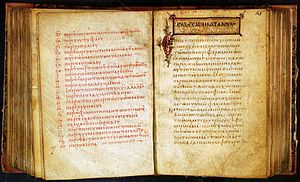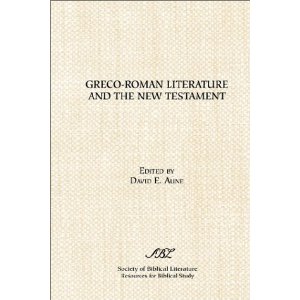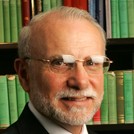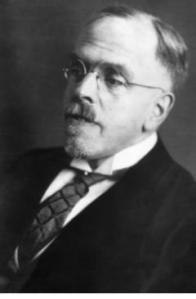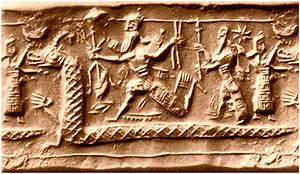Slightly revised R.S's. parenthesis [That's illogical . . . facts unfettered], 6:00 am, 4th December, 2012
NOTE: See Rene’s comment #5 below, titled “Clarification by Dr Avalos” for corrections to some of the detail in this post:
René Salm has posted the following:
I discovered Ehrman’s blog yesterday (http://ehrmanblog.org/rene-salm-at-the-society-of-biblical-literature-meeting/) and found that he and his readers are “outraged” at my being invited to SBL. He writes the following (my comments and emphases added):
———
Rene Salm at the Society of Biblical Literature Meeting
Several people have sent me private emails asking why René Salm was put on the program at the Society of Biblical Literature meeting, given the fact that he is not a scholar and has no credentials in the field [Credentials are evidently indispensable evidence of scholarship. . .–RS]. For those of you who don’t know, Salm has written a book claiming that Nazareth did not exist in the first century, so that Jesus couldn’t be there. He argues this in part because he doesn’t think Jesus existed and so wants to discredit the Gospel stories by saying the Christian authors made the whole thing up. [The Nazareth myth stands on its own. Second guesses on why I wrote the book are irrelevant and often wrong.]
Several scholars (well, everyone who mentioned it to me) were outraged that Salm was allowed to be on the program. This meeting is of a learned society and is to be for scholars with established expertise. It is not to be a venue for people without qualifications to spout their wild theories. Salm claims that those who oppose him have a theological or religious bias against his views, but this simply is not true. EVERYONE who is an expert opposes his views – Jewish, Christian, agnostic, or other. There is not a single archaeologist of ancient Israel that gives him the least credit. [That’s because they know on which side their bread is buttered.] That doesn’t make him wrong. But it does mean that if he wants to argue that every real scholar is in error, he should get some credentials first. [That’s illogical. Because all the credentialed archaeologists have thus far been wrong, therefore I also should get credentials? Presumably in archaeology? Everybody is entitled to an opinion, both the credentialed and the non-credentialed. The difference is that the credentialed academic has one hand on the facts and one hand on a paycheck, while the non-credentialed layperson is free to pursue the facts unfettered.]
In any event, I thought it might be worthwhile to reprint here what I say about Salm’s book in my book Did Jesus Exist? Apologies for those who have read this already. I have removed the footnotes here, but you can find them in the original. . .
——–
This was followed by Ehrman’s “part 2” on me and the SBL. I don’t feel comfortable paying money to his blog and voicing my opinion there, and may simply react on my own MP blog. Of course, my lack of pertinent credentials is a pretext. The tradition would surely be just as opposed to me if I actually had a PhD. My goodness, I think it would be even more upset!
Another curiosity: Ehrman is himself a member of the SBL “Metacriticism of Biblical Studies” unit. [Rene Salm has since corrected this — see Comment #5 below] He’s known about my upcoming talk for a long time, as Avalos hashed out the SBL roster of presentations via emails to the whole list (about two dozen members) over the last twelve months. It’s curious to me that Ehrman did not say something when it could have made a difference, but waited until after the fact to voice his displeasure and to raise the issue of some SBL impropriety.
FYI, here are the members of the Metacriticism of Biblical Scholarship section from their email addresses:
HectorAvalos
james.linville
zeba.crook
R. Raphael
kenneth atkinson
reedrw
william.arnal
alex botta
kurt noll
f. fzindler
stephanielouisefisher
earldoherty
barnasha
steve.a.wiggins
jstiebe
p.davies
thomas thompson
Philippe Wajdenbaum
alenzi
bart ehrman
robert price
james.crossley
Willi Braun
rene salm
J METZGER
c martin
elliott still
b c landau
The Metacriticism section is not a fully formed “unit” but is in its first year of trial status by SBL. [Rene Salm has since corrected this — see Comment #5 below] Complaints from scholars of Ehrman’s stature could well scuttle this auspicious but fledgling ship. . . I plan to contact Avalos on this shortly. [See comment #5 below for corrections made since that contact with Dr Avalos.]
If I’m banned for lack of credentials it means little to me, as I have no plans to speak there again. But I think the whole SBL would have to formulate a new policy because right now any member (credentialed or not) can give a paper as along as s/he’s invited by a “program unit.” Nevertheless, this is a discussion that needs to happen. Scholars should ask themselves why a lot of good work is currently being done outside the guild (Price, Doherty, Zindler, myself, etc.) and a lot of bad work inside of it. Continue reading “More SBL Fallout from René Salm’s paper”
Like this:
Like Loading...

